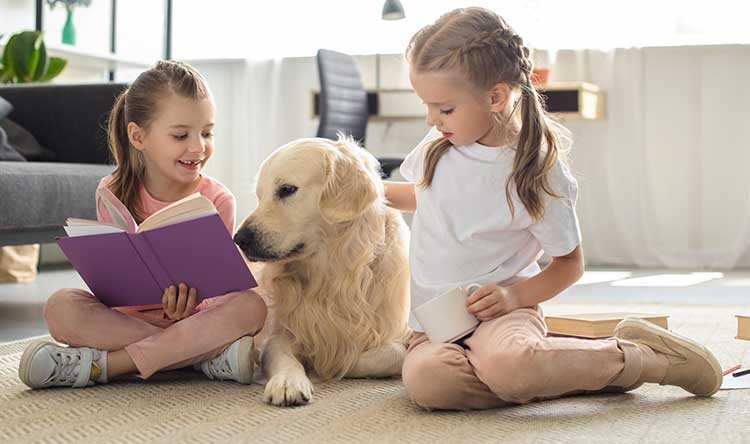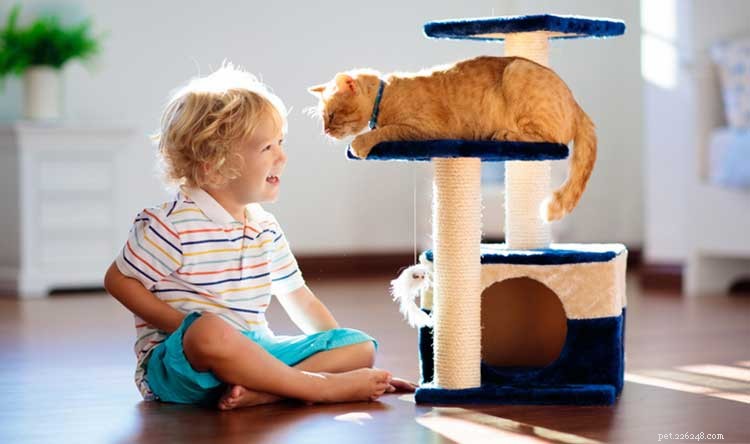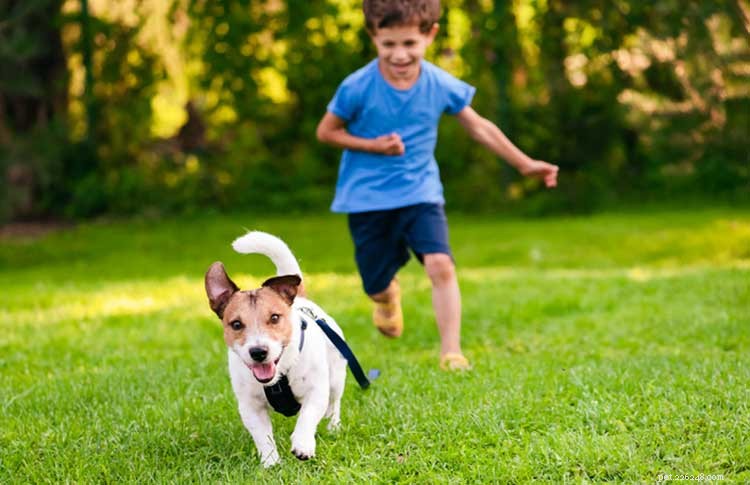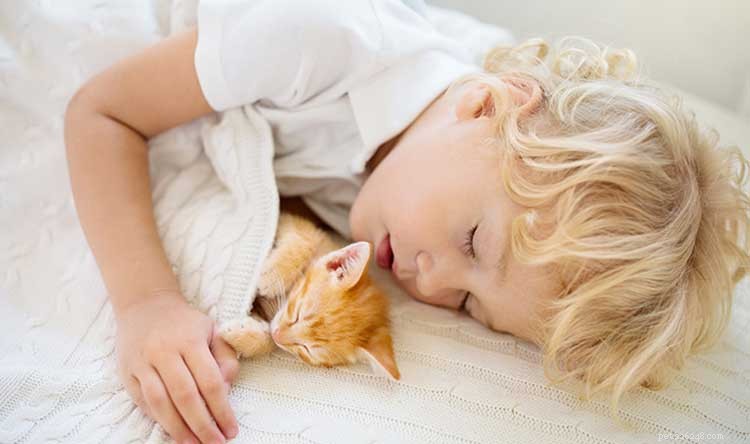
Dus uw kinderen zijn oud genoeg om te genieten van een huisdier en ze smeken er om .
Moet je een hond of een kat nemen? Hoe hou je de kinderen veilig? Hoe leer je ze de verantwoordelijkheid van het bezitten van een huisdier?
We hebben Sarah-Anne Reed, holistische hondentrainer en eigenaar van Pack Dynamics LLC om advies gevraagd.
Uw kind moet oud genoeg zijn om de instructies met betrekking tot de omgang met en de verzorging van uw hond te begrijpen en op te volgen. Als ze niet aan boord zijn met de training en uw aanwijzingen volgen, kan de inconsistentie veel angst bij u veroorzaken, waardoor uw hond gedragsproblemen krijgt.
Als uw kind nog steeds extreme melt-downs heeft, zoals schoppen, schreeuwen, slaan of met dingen gooien, is dit geen comfortabele, veilige omgeving om een hond in te brengen en kan een hond angstig worden. Wanneer honden bang zijn, zullen ze waarschijnlijk grommen of happen naar de persoon voor wie ze bang zijn, en dit kan gemakkelijk leiden tot een beet van uw kind. Het betekent niet dat de hond agressief is, alleen dat ze in een huis zonder kinderen moeten zijn.
Uw kind is klaar voor een hond als het:

Katten zijn veel minder verantwoordelijk voor een kind. Ze hoeven niet te worden gelopen of getraind en zijn behoorlijk zelfvoorzienend. Een kat kan een geweldige jeugdvriend zijn, vooral als ze aanhankelijk zijn en zich graag op je schoot nestelen. Een kat kan het perfecte huisdier zijn voor jonge kinderen om hen verantwoordelijkheden te leren, zoals het voeren van je kat, het borstelen en het schoonmaken van de kattenbak.
Het is ook een uitstekende gelegenheid om uw kind de juiste manier te leren om een dier genegenheid te geven. Ze leren niet aan hun staart te trekken, ze lief te aaien, vriendelijk tegen ze te praten en altijd liefde te tonen. Het is van vitaal belang om ervoor te zorgen dat u het juiste temperament kiest wanneer u een kat neemt, omdat niet alle katten genegenheid genieten of zich op hun gemak voelen bij kinderen. Breng wat tijd door met de kat voordat je de beslissing neemt om een nieuw gezinslid mee naar huis te nemen.
Het introduceren van een kat in uw huis is een veel eenvoudiger proces dan een hond. Hoe rustiger de omgeving is, hoe comfortabeler het zal zijn voor uw nieuwe huisdier om zich aan te passen aan hun nieuwe huis en gezin. Als je een kat introduceert, moet je hem eerst langzaam de kans geven om zijn nieuwe huis te verkennen en hem de kattenbak te laten zien. Verandering voor katten kan moeilijk zijn en nieuwsgierigheid en soms angst opwekken. Daarom is het cruciaal om ze langzaam aan familieleden voor te stellen. Kinderen kunnen moeilijk zijn voor dieren omdat ze kleiner zijn, hun bewegingen onvoorspelbaarder zijn en ze anders klinken en zich gedragen dan volwassenen.
Wanneer een kat bang wordt, kunnen ze sissen of krabben, wat eng kan zijn voor een kind. Ze kunnen ook hun toevlucht nemen tot onderduiken. Geen van beide reacties zorgt voor een gelukkige ervaring voor uw kat of kind.
Zorg ervoor dat uw gezin ontspannen is en stel de kat langzaam één voor één aan elk gezinslid voor. Vraag uw kind om de kat naar hen toe te roepen en laat de kat eerst aan hun hand snuffelen en bied dan wat lekkers aan. Als de kat naar je toe komt en zich op zijn gemak lijkt bij je kind, vraag hem dan om hem zachtjes aan te raken, terwijl je hem begeleidt en aanmoedigt.
Tips:
Introducing a dog to your child can be much more involved. Before ever deciding to get a puppy or adopt a dog, always have your child meet the dog first to see how they interact with each other. If you are thinking of adopting a dog, many dogs have had bad experiences with children or adults in their past, which can cause them to be wary and nervous with children and people in general. I do not recommend adopting a dog who shows any anxiety or fear with your child, as it can take months or even years to help a dog overcome fear, no matter how kind your child is.
Once you have determined that the puppy or rescue dog will be a good match for your family and lifestyle, it’s a good idea to bring something familiar into your home to help them adjust. You can bring their dog bed, a blanket, and toys that will be comforting to them. Set up everything for your dog so that they start to learn where their water bowl is and can go to their familiar dog bed or grab their toy if they need some familiar comforts.

Taking these additional steps will help your dog learn how to calmly interact with your child and teach your child to be kind and gentle to your dog. Your dog has emotions too and can feel nervous or uncomfortable. It’s wise to keep the leash attached to the dog for a while, just in case you misjudged their reaction, you can easily remove the dog from the room if you need to.

Talk to your children before adopting a dog or cat and explain the additional help you will need from them. Your children should feel included in the process and understand that this is a life-long commitment.
It’s a great idea to dog sit for at least a week for a friend or family member to give a real-life experience to your child about the reality of having a dog. Include them in feeding the dog, teaching them how to brush the dog, give affection and play appropriately and take your child along during walks.
Playing with a dog sounds fun, but are they willing to help take the dog out to eliminate, and do the necessary “poop patrol,” even when it’s a cold or a rainy day?
You can also cat-sit if you are planning on getting a kitty to teach your child about the responsibilities of having a cat, like cleaning the litter box, feeding, and brushing them. It’s also essential to teach them how to appropriately play with and give affection to the cat. If you don’t know anyone you can dog- or cat-sit for you could foster for a week. This not only gives you a tremendous real-life experience and also allows you to see if the pet is a good fit for your family and lifestyle.
If you feel like you are already juggling too much in your life, know that having a dog often feels like having another child. Dogs have different needs than children, but if you don’t have the time and patience to dedicate to training and their care as a family, it’s not a good idea to bring a dog into your home as you will feel even more overwhelmed. A cat may be a better option for busy parents, as they require much less time and attention and don’t need training, but still allow your child to learn about the responsibility and joys of caring for and loving an animal.
I do not recommend asking your children to walk your new puppy or dog until you have mastered heel training. Most adults have difficulty walking an untrained dog and a child could easily get hurt, or the dog could get loose and run away or get injured. Once your dog knows how to heel it’s advisable that you walk your dog with your child for a while until your child feels confident and you trust your child to handle every situation that may happen during a typical walk. If your dog reacts to other dogs, either wanting to play with them or nervous when they see another dog, this can be too much to handle for most children, depending on their age.
Sarah-Anne Reed is a holistic dog trainer, and owner of Pack Dynamics, LLC ®. Her practice focuses on understanding and respecting dogs as a different species and honoring them as individual beings.
This article is copyrighted by Sarah-Anne Reed and Pack Dynamics ® LLC, and no reproduction of this article without the express permission of Sarah-Anne Reed is permitted.
Are you thinking about getting a new pet? Then you are a great candidate for pet insurance. Get a quote and make sure you’re covered for future injuries or illnesses.